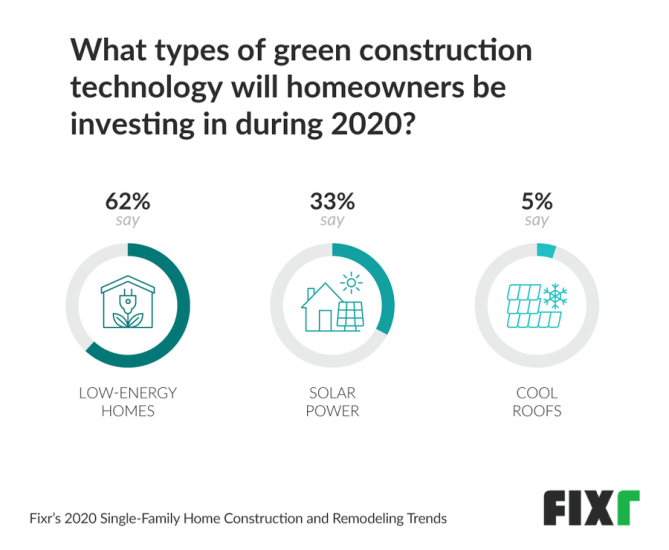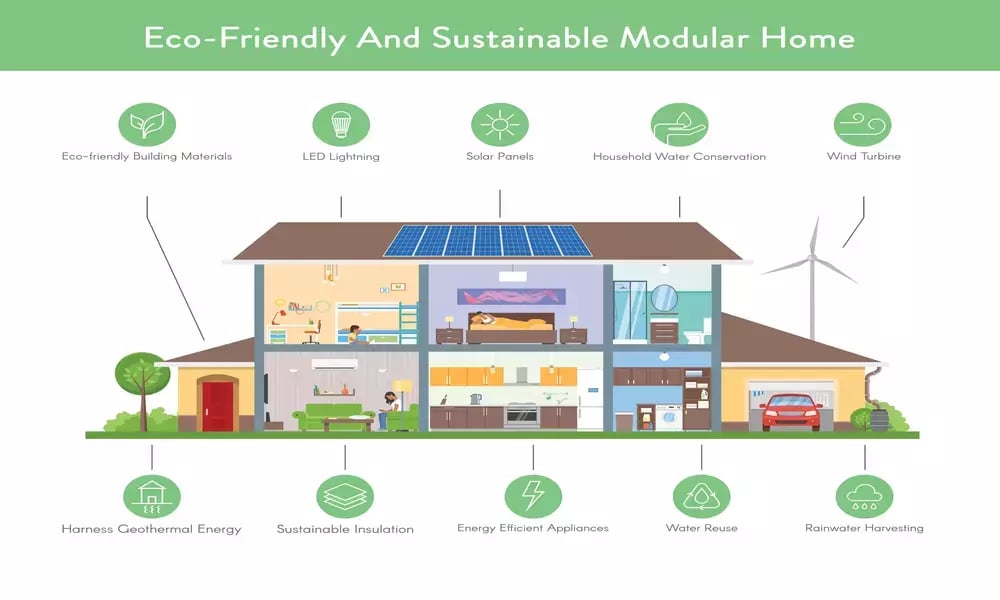Discover the latest trends and technologies for creating eco-friendly homes that will revolutionize the way we live and protect the planet.

Image courtesy of via DALL-E 3
Table of Contents
- Introduction to Eco-Friendly Homes
- What Makes a Home Eco-Friendly?
- Renewable Energy and Eco-Friendly Homes
- Smart Homes and Eco-Friendly Living
- Eco-Friendly Home Trends
- How to Make Your Home More Eco-Friendly
- Challenges in Creating Eco-Friendly Homes
- Real-Life Examples of Eco-Friendly Homes
- The Future of Eco-Friendly Homes
- Conclusion: The Impact of Eco-Friendly Homes
- FAQs
Introduction to Eco-Friendly Homes
Have you ever heard about eco-friendly homes? These special houses are not just ordinary homes; they are designed to be kind to our planet. Living in an eco-friendly home means that you are helping the environment by making smart choices about how you use energy and materials. Let’s explore more about what makes eco-friendly homes so important for us and the Earth.
Green living is all about living in harmony with nature and reducing our impact on the environment. Sustainable design is a big part of eco-friendly homes. This means using materials and technologies that help conserve resources and minimize pollution. By choosing to live in an eco-friendly home, you are making a positive difference for the planet.
What Makes a Home Eco-Friendly?
When we talk about eco-friendly homes, we’re referring to houses that are designed and built in a way that helps the environment. These homes are like superheroes that save the planet by using sustainable design, eco-friendly technology, and energy efficiency. Let’s dive into what makes a home eco-friendly and why it’s so important.
Sustainable Materials
Eco-friendly homes are built using sustainable materials. These are materials that are good for the environment and can be produced without harming our planet. For example, instead of cutting down trees for wood, builders might use bamboo, which grows back much faster. By using sustainable materials, we can help protect forests and wildlife.
Energy-Saving Tech
One of the coolest things about eco-friendly homes is the energy-saving technology they use. From solar panels on the roof to smart thermostats inside, these homes are filled with gadgets that help save energy. For instance, smart thermostats can learn your schedule and adjust the temperature automatically, reducing the amount of energy needed to heat or cool your home. By using less energy, eco-friendly homes help lower electricity bills and protect the environment.
Benefits of Living in an Eco-Friendly Home
Living in an eco-friendly home brings many benefits, not just for you but also for the environment. When you choose to live in a green home, you are making a positive impact on the world around you. Let’s explore the advantages of living in an eco-friendly home.
1. Healthier Living: Green living spaces are designed to be healthier for people. They use materials that are non-toxic and promote good indoor air quality. This means you and your family can breathe easier and stay healthy.
2. Energy Efficiency: Eco-friendly homes are built with energy-efficient features that help reduce your energy consumption. This not only saves you money on utility bills but also reduces your carbon footprint, making your home more sustainable.
3. Connection to Nature: Living in an eco-friendly home often means being closer to nature. Whether through natural lighting, indoor plants, or green spaces, these homes foster a sense of connection to the environment, promoting overall well-being.
4. Sustainable Lifestyle: By choosing to live in an eco-friendly home, you are supporting a sustainable lifestyle. This means using resources responsibly, reducing waste, and being mindful of the impact your choices have on the planet.
Overall, living in an eco-friendly home is not just about the physical space you inhabit but also about the values and practices that it embodies. It’s a way of living that benefits both you and the world around you.
Renewable Energy and Eco-Friendly Homes
When it comes to creating eco-friendly homes, one of the key aspects to consider is the source of energy used. By harnessing renewable energy sources like solar power and wind energy, homes can reduce their reliance on traditional energy sources that harm the environment. Let’s explore how these renewable energy sources can be utilized to make homes more eco-friendly.

Image courtesy of www.roofingcontractor.com via Google Images
Solar Panels
Solar panels are a popular choice for eco-friendly homes. These panels are designed to capture sunlight and convert it into electricity that can power the home’s appliances and lighting. By using the sun’s energy, homeowners can significantly reduce their carbon footprint and lower their electricity bills. Additionally, solar panels require minimal maintenance and have a long lifespan, making them a sustainable energy solution for eco-friendly homes.
Wind Turbines
Wind turbines are another renewable energy option for eco-friendly homes. These structures harness the power of the wind to generate electricity, providing a clean and sustainable energy source. By installing wind turbines on their property, homeowners can take advantage of windy conditions to produce energy without relying on fossil fuels. While wind turbines may not be suitable for all locations, they are an excellent choice for homes in areas with consistent wind patterns.
Smart Homes and Eco-Friendly Living
smart homes are like homes with superpowers that can help save the planet. They are extra smart because they make good choices that help the Earth. Let’s explore how these smart homes can be eco-friendly and why it’s important to have them.
Smart Thermostats
Imagine having a thermostat that knows when to adjust the temperature all by itself. Smart thermostats do just that! They can help save energy by making sure your home is not too hot or too cold when no one is there. This way, you use only the energy you need, which is good for the environment.
Automated Lighting
Have you ever forgotten to turn off the lights when you leave a room? Automated lighting can help with that. These lights can sense when someone is in the room and turn on or off by themselves. By using only the light you need, you save energy and help the planet too.
Eco-Friendly Home Trends
When it comes to making our homes both stylish and environmentally friendly, there are some awesome trends that are gaining popularity. Let’s take a look at some of the latest cool trends that make homes trendy and kind to Earth.

Image courtesy of www.novatr.com via Google Images
Sustainable Design
One of the hottest trends in eco-friendly homes is sustainable design. This means using materials and methods that have a minimal impact on the environment. From reclaimed wood to energy-efficient windows, sustainable design is not only good for the planet but also looks great in our homes.
Green Living
green living is all about incorporating eco-friendly practices into our daily lives. This trend includes things like composting, growing your own fruits and vegetables, and using non-toxic cleaning products. By embracing green living, we can reduce our carbon footprint and help protect the Earth for future generations.
How to Make Your Home More Eco-Friendly
Do you want to help the environment and make your home a more eco-friendly place? Here are some simple tips on how you can do just that!
Recycling and Reusing
One easy way to make your home more eco-friendly is by recycling and reusing items. Instead of throwing things away, try to find ways to repurpose them. For example, you can turn old jars into storage containers or use old fabric to make new things. By reusing items, you can help reduce waste and save resources.
| Trend/Technology | Description | Benefits |
|---|---|---|
| Solar Panels | Generating electricity from sunlight | Reduced energy bills, lower carbon footprint |
| Green Roofs | Plants and vegetation on rooftops | Improved insulation, stormwater management |
| Smart Thermostats | Adjusting temperature based on usage patterns | Energy savings, increased comfort |
| Energy-Efficient Appliances | Devices using less energy to operate | Lower utility bills, less environmental impact |
Saving Water
Another way to make your home more eco-friendly is by saving water. You can do this by taking shorter showers, turning off the faucet while brushing your teeth, and fixing any leaky faucets. You can also collect rainwater to water your plants and garden. By saving water, you can help conserve this precious resource and reduce your water bill at the same time.
Challenges in Creating Eco-Friendly Homes
Creating eco-friendly homes is not always an easy task. There are challenges that homeowners, builders, and designers face when trying to make homes that are kind to the environment.

Image courtesy of www.arcadis.com via Google Images
Sustainable Design
One of the challenges in creating eco-friendly homes is finding sustainable materials to build with. Sustainable design means using materials that are good for the planet and can be renewed or recycled. Sometimes, these materials can be harder to find or more expensive than traditional materials.
Green Living
Living in an eco-friendly way can also be challenging. It means making choices every day that help the environment, like using less water, recycling, and saving energy. It can be tough to change our habits and get used to a more eco-friendly lifestyle.
Real-Life Examples of Eco-Friendly Homes
Share stories about real homes that are doing a great job at being eco-friendly.
House 1: Solar-Powered Bliss
In a quiet neighborhood, there is a house that stands out for its eco-friendly features. This home is powered by solar panels on the roof, which soak up the sun’s energy and turn it into electricity. The family living there hardly ever needs to worry about their energy bill because the sun provides more than enough power to keep their lights on and appliances running. By using renewable energy from the sun, this home is doing its part to reduce its carbon footprint and help the planet.
House 2: Smart and Sustainable
Another eco-friendly home worth mentioning is a smart house that is equipped with the latest technology to save energy. This home has smart thermostats that automatically adjust the temperature based on the family’s habits and the weather outside. The automated lighting system ensures that lights are only on when needed, cutting down on electricity usage. By making these smart choices, this home not only saves energy but also reduces its impact on the environment.
The Future of Eco-Friendly Homes
As we look ahead to the future of eco-friendly homes, we can imagine a world where sustainable design and green living are even more integrated into our daily lives. With advancements in eco-friendly technology, we are moving towards homes that not only save energy but also actively contribute to a healthier planet.

Image courtesy of www.bbeb.com via Google Images
Sustainable Design
In the future, sustainable design will play an even bigger role in how homes are built. We can expect to see more houses made from eco-friendly materials that are not only good for the environment but also durable and stylish. Architects and builders will continue to innovate and find new ways to create homes that minimize their impact on nature.
Green Living
Living in an eco-friendly home will become the norm as people become more aware of the importance of caring for the Earth. From energy-efficient appliances to water-saving fixtures, future homes will be designed to help us live more sustainably. Families will be able to enjoy a comfortable lifestyle while also reducing their carbon footprint.
Eco-Friendly Technology
The future of eco-friendly homes will be heavily influenced by technology. Smart homes will become even smarter, with advanced systems that monitor energy usage and automatically adjust to optimize efficiency. From solar panels that seamlessly blend into roofs to wind turbines that generate electricity in urban settings, eco-friendly technology will continue to transform the way we live.
Conclusion: The Impact of Eco-Friendly Homes
Living in an eco-friendly home is not just about having a trendy space; it’s about making a real difference for our planet. By choosing sustainable design and green living practices, we can help protect the Earth for future generations. Eco-friendly homes play a crucial role in reducing our carbon footprint and promoting a more sustainable way of living.
When we opt for eco-friendly technology and energy-efficient solutions in our homes, we contribute to a healthier environment. These choices lead to a decreased reliance on non-renewable energy sources and a significant reduction in energy consumption. Through simple changes like using solar panels, wind turbines, smart thermostats, and automated lighting, we can make a big impact on our planet’s well-being.
Moreover, eco-friendly homes offer a range of benefits for both individuals and nature. From lower utility bills to improved indoor air quality and natural light, the advantages of green living are countless. By embracing the concept of eco-friendliness, we create spaces that are not only aesthetically pleasing but also environmentally responsible.
In conclusion, the impact of eco-friendly homes is far-reaching. By integrating sustainable design principles, eco-friendly technology, and energy-efficient practices into our living spaces, we pave the way for a more sustainable future. Let’s continue to make conscious choices that prioritize the well-being of our planet and foster a greener, healthier world for all.
FAQs
Can one person make a difference with an eco-friendly home?
Yes, absolutely! Every small step counts when it comes to being eco-friendly. By making eco-friendly choices in your home, like using energy-efficient appliances, recycling, and saving water, you are contributing to a healthier planet. Remember, even one person’s efforts can lead to big changes over time.
Is it expensive to make a home eco-friendly?
Not necessarily! While some eco-friendly technologies and materials may come with a higher initial cost, many eco-friendly practices can actually save you money in the long run. For example, using energy-efficient light bulbs and appliances can lower your electricity bill. Additionally, simple actions like turning off lights when you leave a room or reducing water usage can be cost-effective ways to make your home more eco-friendly.








